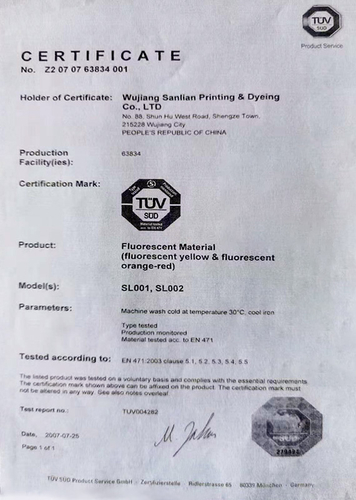Professional Maintenance Guide for a Body Cooling Vest for Workers
1. Cleaning Procedures for Optimal Hygiene
Refer to Care Instructions: Always consult the care label or manufacturer's recommendations for specific cleaning procedures tailored to your Body Cooling Vest for Workers .
Hand Washing (Preferred): For the best results, hand wash the vest using mild detergent and lukewarm water. This gentle approach helps preserve the integrity of the fabric and any embedded cooling technologies.
Machine Washing (If Permitted): If machine washing is allowed, use a delicate cycle with cold water. Place the vest in a protective mesh laundry bag to minimize wear and tear during the wash cycle.
Thorough Rinsing: Ensure all soap residue is thoroughly rinsed out to prevent skin irritation and potential damage to the material.
2. Drying Techniques for Longevity
Air Drying Only: To avoid damaging the fabric or cooling components, always air dry the Body Cooling Vest for Workers . Avoid using tumble dryers, as the heat can compromise the vest's functionality.
Shaded Drying Area: Dry the vest in a shaded location away from direct sunlight, which can cause fading or weaken the material over time.
Flat or Hanging Drying: Allow the vest to dry naturally by laying it flat or hanging it on a clothesline. This ensures even drying and prevents distortion of the shape.
3. Maintaining Cooling Components
Rechargeable Cooling Packs:
If the vest incorporates removable cooling packs, store them in the freezer or refrigerator when not in use to maintain their cooling efficiency.
Avoid leaving the packs in the freezer for excessively long periods, as this may reduce their overall lifespan.
Regularly inspect the packs for leaks, cracks, or signs of wear, replacing them promptly if necessary.
Evaporative Cooling Fabrics:
For vests utilizing evaporative cooling technology, soak the garment in cool water for 5-10 minutes before each use to activate the cooling effect.
Refrain from soaking the vest in hot water, as this can degrade the fabric's cooling properties over time.
4. Storage Best Practices
Clean Before Storing: Always store the Body Cooling Vest for Workers in a clean and dry condition to prevent mold, mildew, or unpleasant odors.
Flat Storage: Fold the vest neatly and store it in a cool, dry place. Avoid hanging it for extended periods, as this could stretch the fabric and affect its fit.
Protection from Pests: Store the vest in a sealed container or bag to safeguard it against dust, insects, and other potential contaminants.
5. Inspection and Repair for Durability
Regular Inspections: Periodically examine the vest for signs of wear and tear, such as tears, loose seams, or damaged cooling components.
Minor Repairs: Address minor issues like sewing torn seams or reinforcing weak areas to extend the vest's usability.
Timely Replacement: If the cooling function significantly diminishes or the vest shows extensive damage, consider replacing it to ensure worker safety and comfort.
6. Avoiding Harsh Conditions
Prevent Excessive Heat Exposure: Keep the Body Cooling Vest for Workers away from direct sunlight, radiators, or other sources of prolonged heat exposure.
Protect from Chemicals: Avoid exposing the vest to strong chemicals, oils, or solvents that could degrade the fabric or compromise its cooling properties.

 English
English 简体中文
简体中文













 3rd Floor, East Gate, No. 2599 Park Road, Sheng Ze Town, Wu Jiang District, Suzhou City, Jiangsu Province
3rd Floor, East Gate, No. 2599 Park Road, Sheng Ze Town, Wu Jiang District, Suzhou City, Jiangsu Province  +86- 0512-63519080
+86- 0512-63519080
 +86-13584404311
+86-13584404311 